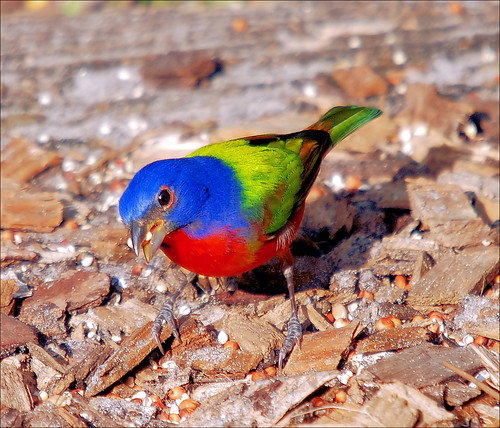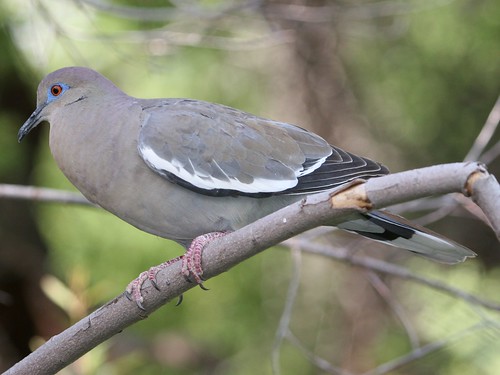The Painted Bunting (Passerina ciris) belongs to the Passerina genus of birds in the Cardinal family Cardinalidae.
The male Painted Bunting is often described as the most beautiful bird in North America. Its beautiful colors, dark blue head, green back, red rump and underparts, make it easy to identify, but is difficult to spot since it hides in foliage even when it sings. The plumage of female and juvenile Painted Buntings is green and yellow-green, serving as camouflage.
The male Painted Bunting is often described as the most beautiful bird in North America. Its beautiful colors, dark blue head, green back, red rump and underparts, make it easy to identify, but is difficult to spot since it hides in foliage even when it sings. The plumage of female and juvenile Painted Buntings is green and yellow-green, serving as camouflage.
The Painted Bunting is found in thickets, woodland edges and brushy areas, along roadsides, in suburban areas, and gardens. The male was once a popular caged bird, but now its capture is illegal. Populations are declining on the East Coast where habitat is being lost to development. The breeding range includes Texas, Oklahoma, Arkansas, Florida, Georgia, South Carolina and Louisiana.
Painted Buntings are mostly monogamous and are solitary or in pairs during breeding season, but sometimes exhibit polygyny. They are shy, secretive and often difficult to see. Males sing from exposed perches and often hop on the ground. The Painted Bunting eats seeds, spiders, insects and caterpillars. It lays 3 or 4 gray-white eggs, spotted with brown which are incubated by the female for about 11-13 days and the young are ready to leave the nest around 2 weeks after hatching.






